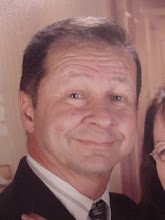Hooray for Peter Kostis! I was very happy to see someone finally speaking out against some of golf’s dumbest rules. I wish and hope more golfers will do the same. The general purpose of having rules and officials for any sport is to promote fairness. Allow me to illustrate this with a true story example from a baseball game where a batter just hit a “walk-off” game winning home run, but while circling the bases, suffered an immobilizing leg injury. Since the rules say you cannot assist a teammate to run the bases, and you must touch home plate to score the run, it looked like the home run was not going to count. However, the other team helped that runner get around the bases because there was nothing in the rules that prevented the opposing team from doing that. Why did they do that? Because they accepted the fact that they were beaten fair and square by that home run, and circling the bases was only a formality. This is a tribute to the human spirit and this is what good sportsmanship is all about.
Now if the Rules Of Golf could put fairness first, then the officials can earn their pay by simply deciding if any infraction resulted in gaining an advantage. If no advantage was gained, logic and sportsmanship would indicate there is no good reason to assess a penalty. Now purists might say this is against the sanctity and integrity of the rules. I say this attitude could not be more wrong. There is no integrity in forbidding sportsmanship. Instead that would be the height of arrogance to put such sanctity ahead of common sense and fairness. Intentional infractions deserve a penalty, unintentional infractions that have nothing to do with the skill of the game do not deserve a penalty.
There are so many examples of bad rules. You can fix a ball mark on the green, but not a spike mark. Neither one belongs there. But this allows the unscrupulous to deliberately put several spike marks around the cup so the following players cannot have the same chance to make a putt. So a person who demonstrates sportsmanship by fixing spike marks is assessed a penalty, even if that act demonstrates real integrity and fairness for the following players.
How can you say to pick up the pace while also saying to slow things up by forcing a player to go back and replay a shot from its original spot or hit a provisional ball? Peter Kostis's idea correctly solves this issue and eliminates the need to ever have to play a provisional ball. This also simplifies rules for OB, lost balls, and unplayable lies. Peter, let's hear more of your ideas, don't stop now, keep it up!
Enough of this purist attitude that all rules are sacred, let us move into an enlightened 21st century under the banner of fairness and continuous improvement by doing away with senseless rules that have nothing to do with the skill of the game. Those who disagree should turn themselves in to the police station every time they drive one MPH over the speed limit. And if they don’t want to do that, then they lack integrity and are therefore hypocrites.
Monday, October 25, 2010
Being a right hander, I scoffed at tips that said to use your left hand for control. However, since I like to tinker with my swing, I had a contest of left hand control of the backswing vs. right hand control, and the left hand won, including pitches, chips, and putts. CAN'T WAIT UNTIL NEXT YEAR because father time has been eroding my scores. NO I AM NOT DONE YET, LOOK OUT 2011 !!!
Wednesday, September 29, 2010
Standard chip techniques say to use an open stance and play the ball back of center to promote a descending strike. This may work for most golfers, but many have problems skulling or chunking the ball and also have poor distance control with this method because the ball takes off too low and too hot. Here is an alternate method for those experiencing this type of trouble:
Try a closed stance with a ball position forward of center, and use a pronounced forward press. This allows a descending strike with less chance of skulling or chunking. For distance control try using the same comfortable backswing all the time (maybe 2 or 3 feet long), but just change clubs depending on the desired distance.
Try a closed stance with a ball position forward of center, and use a pronounced forward press. This allows a descending strike with less chance of skulling or chunking. For distance control try using the same comfortable backswing all the time (maybe 2 or 3 feet long), but just change clubs depending on the desired distance.
